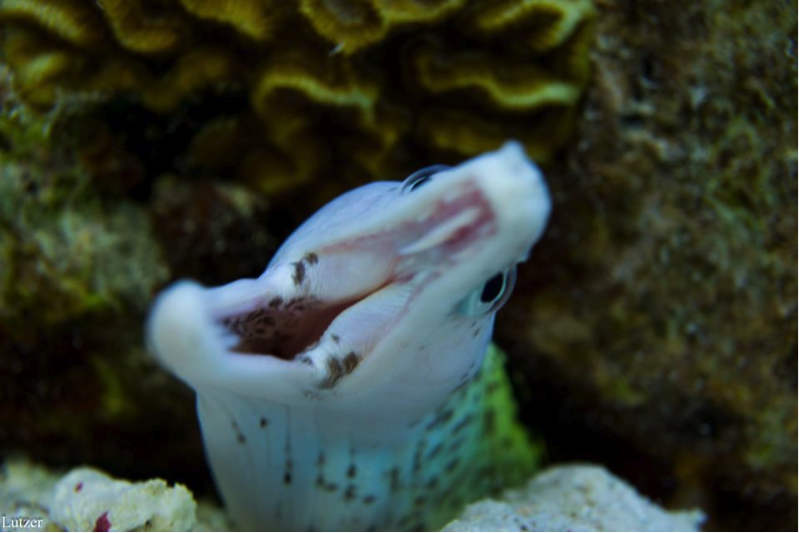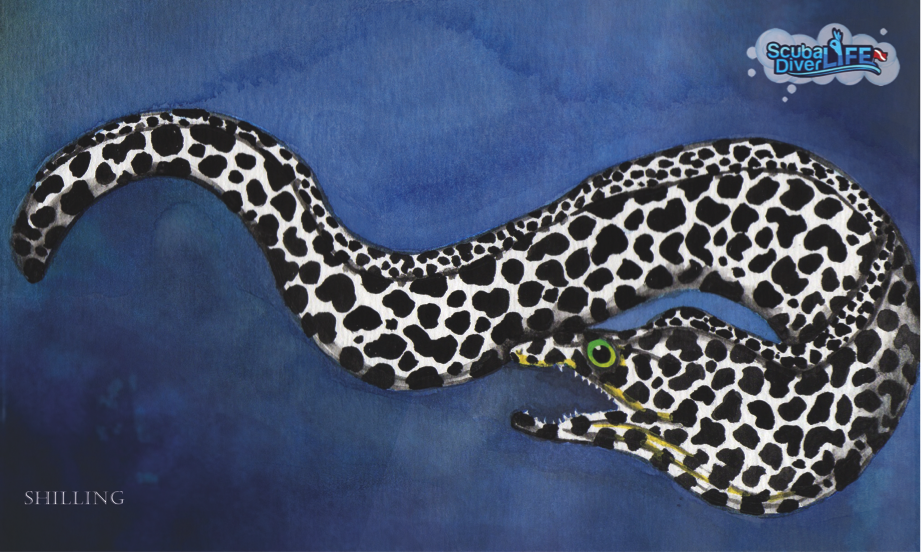There are about 100 species of moray eels worldwide and are commonly found in coral reefs or rocky areas of both shallow and deep tropical seas. They are a fairly secretive animal and shelter inside crevices or under ledges in the reef leaving only its pointed snout visible. By spending the majority of their time hiding, moray eels are able to remain out of sight from predators and are also able to ambush any unsuspecting prey that passes.
Moray´s are wonderfully photogenic ranging in various camouflaged skin colors. Some are spotted, striped, freckled and others have a solid skin color. The mouth is also camouflaged since they constantly are opening and closing their mouths. Despite their varying size and color all moray eels are fairly similar in appearance with a long, muscular, snake-like body averaging to be about 5 feet long with skin that is scaleless and covered with protective mucus. The dorsal fin runs along most of the back to the tail which comes to a slightly flattened point. Eels may appear to be reptiles with their snake-like appearance but they are in fact fish and not reptiles.

Photo by David Lutzer of the Ocean Awareness Community
Morays are carnivorous and survive on a diet consisting of only meat such as fish, molluscs including cuttlefish, squid and crustaceans such as crabs. Most moray eels have bad eye sight and rely on their keen sense of smell to locate their prey. Hiding in amongst the corals allows them to surprise attack their prey.
Morays have few predators. Large groupers and other moray eels sometimes prey upon morays.

Photo by David Lutzer of the Ocean Awareness Community
The morays are frequently thought of as particularly dangerous or ill-tempered animals. New divers may even find morays to be a bit frightening because they always have their mouth open bearing very sharp teeth and appear to be ready to bite, indeed not a very welcoming sight. This behavior may look threatening but it is actually a way for the morays to pump water across their gills enabling them to breathe.
It’s important to respect moray eels while diving. Most species have terrible eyesight and may mistake a pocking finger or dangling piece of gear for a fish. It may be tempting to pet an eel but it not a good idea. I personally have seen dive masters giving a show to fellow divers handling green moray eels like dogs, stroking them and even pulling them away from their caves in their arms. These divers do have experience doing this and know that they are taking a risk but it’s important that new divers understand that they should not try this out. Give moray eels space and they pose no threat.


